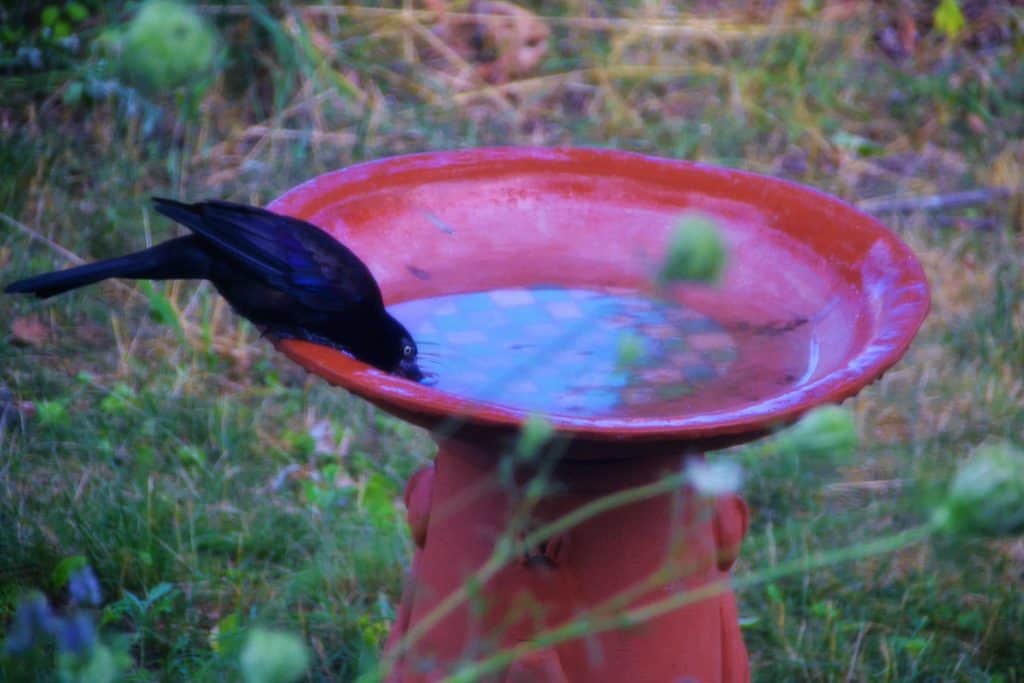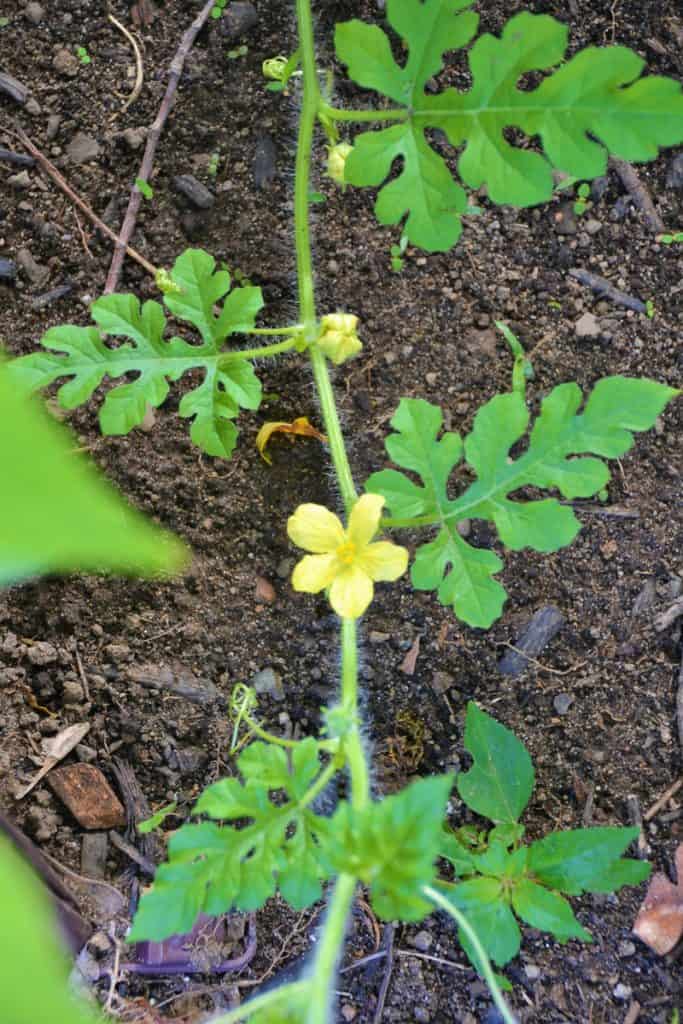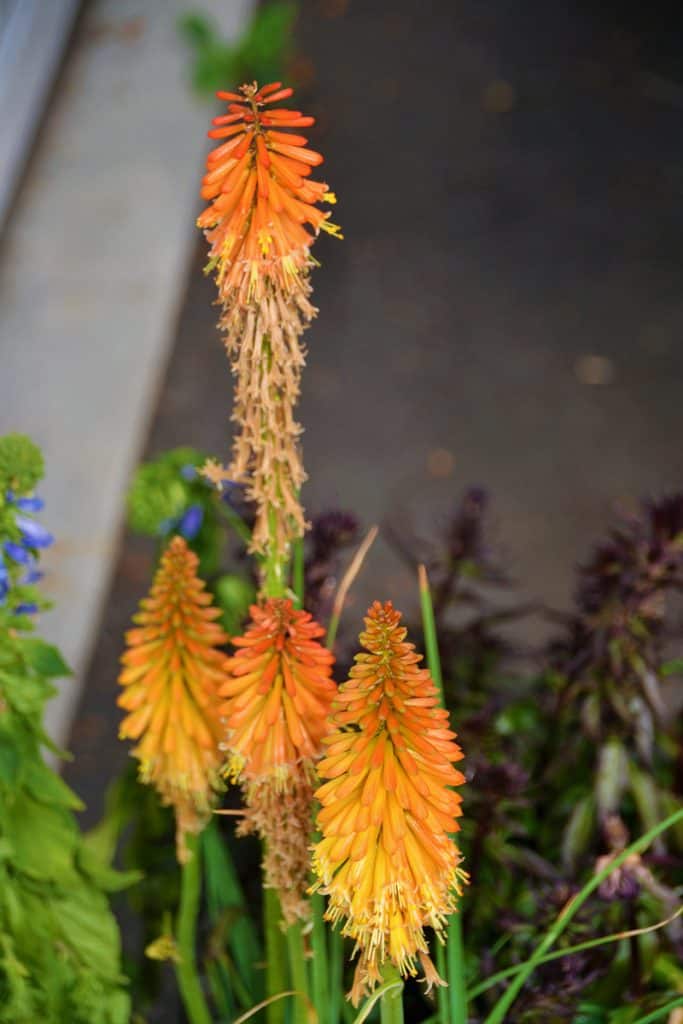Here’s what’s blooming in town this week to make your walks more enjoyable
Is anyone missing the mosquitoes this summer? One good thing about drought is that there is very little standing water or puddles that last long enough for mosquito larvae to develop, so there are fewer mosquitoes in most areas this summer. While there are still some mosquitoes bugging us as we go about our garden chores, they seem to be less of a constant presence as they are in some summers.
However, we are all dismayed to see so many drooping plants. Anything planted less than a year ago is at greater risk from drought because its roots are not yet established enough to find water that has worked its way deep into the soil, but even established plants are showing stress from this lengthy drought. Many surrounding towns had severe water restrictions at this point, but we in Saugus are fortunate to still be able to water our gardens and keep our plants alive.
Drought resistant plants like lavender still manage to look perky. Like many plants with grayish foliage, it has a “natural sunscreen” that protects the leaves from drying out in hot, windy conditions, and it thrives in sandy and rocky soils. Ornamentally, the gray foliage is also a good contrast with the green leaves of other plants in the garden. Lavender doesn’t get burned by hot surfaces like pavement and stones nearby. Wet weather like last summer would not have been to this plant’s liking, since one of the biggest problems in growing this plant is root rot from poorly drained soils. Most people like the fragrance of the flowers and leaves, but deer and rabbits find it unappetizing. It also is among the fragrances least favored by mosquitoes, and yet bees and butterflies find it quite appealing.
Lavender appropriately grows in the gardens at the Saugus Iron Works, as they are among the most popular 17th century herbs to be brought from Europe to North America. Lavender was mentioned in herbals by the 13th century and had already attained a reputation for many medicinal and household benefits, so it would have been brought along with settlers very early. English lavender (Lavandula angustifolia) is the hardiest and is the only species that reliably survives our winters. French lavender and Spanish lavender are not reliably winter hardy here, but are sometimes sold as annuals. Dried spikes of lavender were used in 27th-century homes to keep vermin out, and clothes were often stored with dried lavender sachets or wands to keep moths away and make the fabrics smell more attractive.
A fiery flowering perennial from South Africa that has become popular in recent years is red-hot poker (Kniphofia uvaria), which is also known as torch lily or tritoma. It produces a spike of bright orange, red and/or yellow tubular flowers on a tall stem in late summer. It prefers a sunny location and is quite hardy here. The flowers are very eye-catching, and they are popular with hummingbirds and other pollinators.
The fruit of the watermelon (Citrullus lanatus) is a popular attraction at summer parties indoors and out. The plant itself takes quite a bit of garden space, but it can be very rewarding to grow, as they have pretty yellow flowers and deeply cut foliage. It is always fun to see the first small fruits emerge and develop along the long trailing stems. This year there are several watermelons growing at the community garden, and some of them have small fruit about 2″ across at this point. Watermelons need a long, warm growing season so they are more often grown farther south, but if the seeds are started early enough indoors it is possible to grow some mature fruits before frost here. Most people choose varieties with small fruit that may take fewer weeks to grow to harvestable size than larger varieties, and that also fit better in the refrigerator than fruits exceeding a foot across!
Due to the lengthy drought, it is a good idea to have birdbaths kept filled in your garden, and perhaps some lower water basins for other wildlife, since every living thing outside would prefer more water than seems available right now. Small animals, such as rabbits, can’t reach the birdbath, so small water basins on the ground may be helpful to them, and even bees and butterflies like shallow basins with water and some stones or marbles they can stand on so they are not in danger of drowning in deep water.
Editor’s Note: Laura Eisener is a landscape design consultant who helps homeowners with landscape design, plant selection and placement of trees and shrubs, as well as perennials. She is a member of the Saugus Garden Club and offered to write a series of articles about “what’s blooming in town” shortly after the outbreak of the COVID-19 pandemic. She was inspired after seeing so many people taking up walking.






